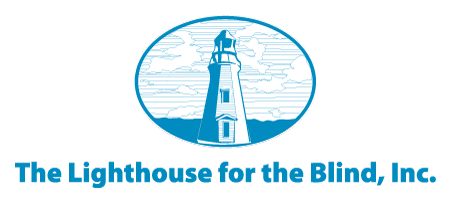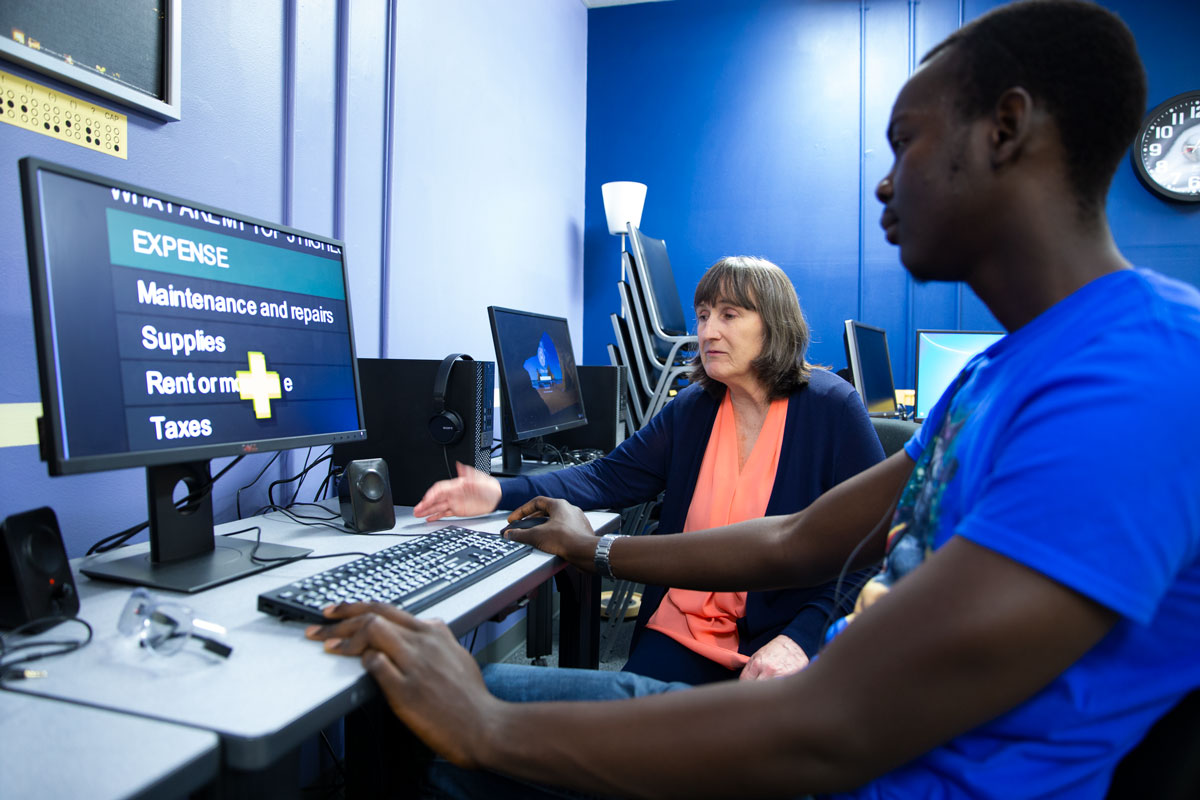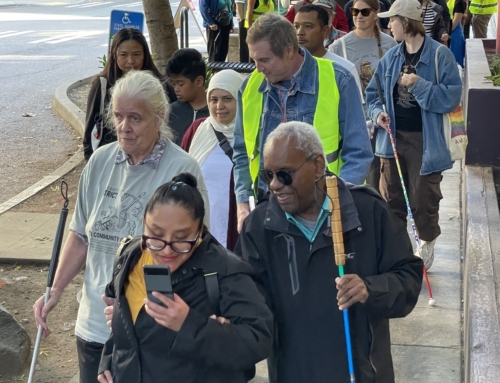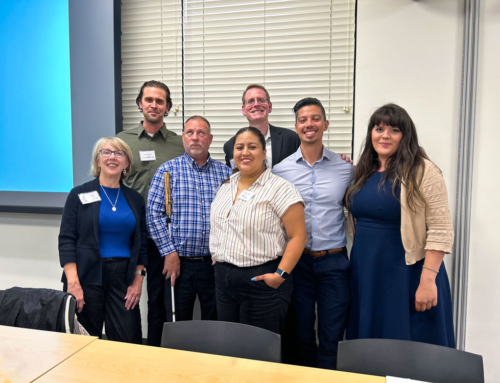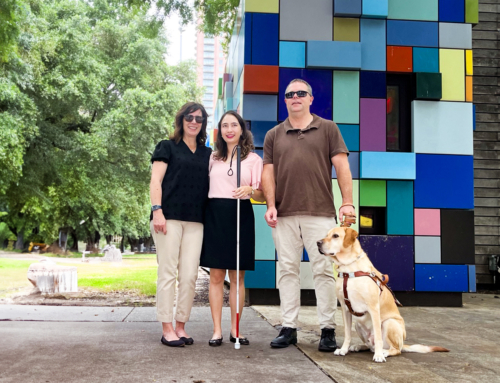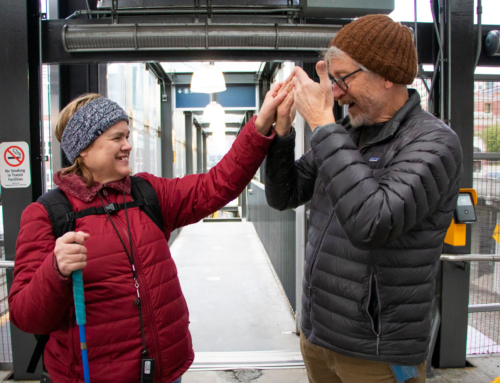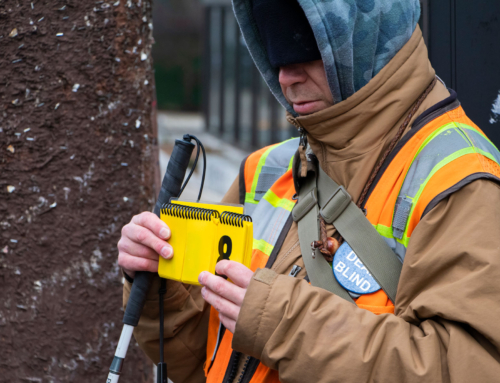Why National Disability Employment Awareness Month is Important
Today, seven out of every ten adults who are blind are unemployed or significantly underemployed in the United States. For people who are DeafBlind, the unemployment number climbs to over 80%. For people who are blind with multiple disabilities, over 90%. One-third of all people who are blind live in poverty. National Disability Employment Awareness Month (NDEAM) offers an opportunity to discuss these statistics and offer solutions.
There are a number of factors in the national 70% unemployment rate for adults who are blind. Many employers and members of the public are simply unaware of the assistive technology available to people who are blind and DeafBlind that enable them to do their jobs. In addition, the lack of visibility of blind and DeafBlind people in society contributes to misconceptions and bias towards people with visual disabilities. These same misconceptions affect people with many different types of disabilities.
“I envision a future where recognition of the capabilities of people who are blind or DeafBlind is a cultural norm and the unemployment rate is no longer staggeringly high,” says The Lighthouse for the Blind, Inc. President and CEO, George Abbott.
NDEAM exists as an opportunity to bring to light disability employment issues. It also offers an opportunity to dispel misconceptions about disability employment and provide education. This month, our aim is to increase access and opportunity by breaking the stigma about disability employment and sharing education about what’s possible.
George Abbott notes, “My dream would be that one day there wouldn’t be the need for The Lighthouse. Because every employer would be willing to break down barriers and provide opportunities to people who are blind and DeafBlind.”
Workplace accommodations aren’t as expensive as you might think
People with disabilities have many talents! With the right tools and accommodations, they can pursue a wide variety of careers. With the use of adaptive technology at The Lighthouse, there are people who are blind and DeafBlind powering everything we do. From aerospace machining, production, service businesses, retail, administration, accounting, human resources, employee training, and executive-level management there are people who are blind in every department.
According to data collected from the Job Accommodation Network (JAN), more than half of all workplace accommodations cost nothing at all. Other accommodations reported by employers had an average one-time cost of only $500. Learn more about free and low cost accommodations >>
But what’s even lesser known is that for accommodations that are more expensive, tax incentives are available to employers of individuals with disabilities. JAN reports that these tax incentives help cover the cost of accommodations for employees and equipment to make businesses accessible.
This month, the Lighthouse will be sharing tips and information about what adaptive equipment is available for people who are blind, DeafBlind, or low vision. We’ll also share how you can implement more accessibility into your workplace.
Resources are available for employers
Many employers might not know what they need to do in order to make their workplace accessible for someone with a disability. After all, each individual is unique! Luckily, there are great free resources available through the U.S. Department of Labor’s Office of Disability Employment Policy (ODEP). These resources are focused on helping workplaces increase access and implement accommodations.
ODEP provides multiple services such as JAN, the Employer Assistance and Resource Networks on Disability Inclusion (EARN), The Partnership on Employment and Accessible Technology (PEAT), the LEAD Center, and the Center for Advancing Policy on Employment for Youth (CAPE – Youth). Each of these is designed to help address different aspects of disability employment.
Many other resources, both locally and nationally, are also available to help employers navigate providing accommodations for employees. Resources vary by city and state so each workplace should check what’s available in their area.
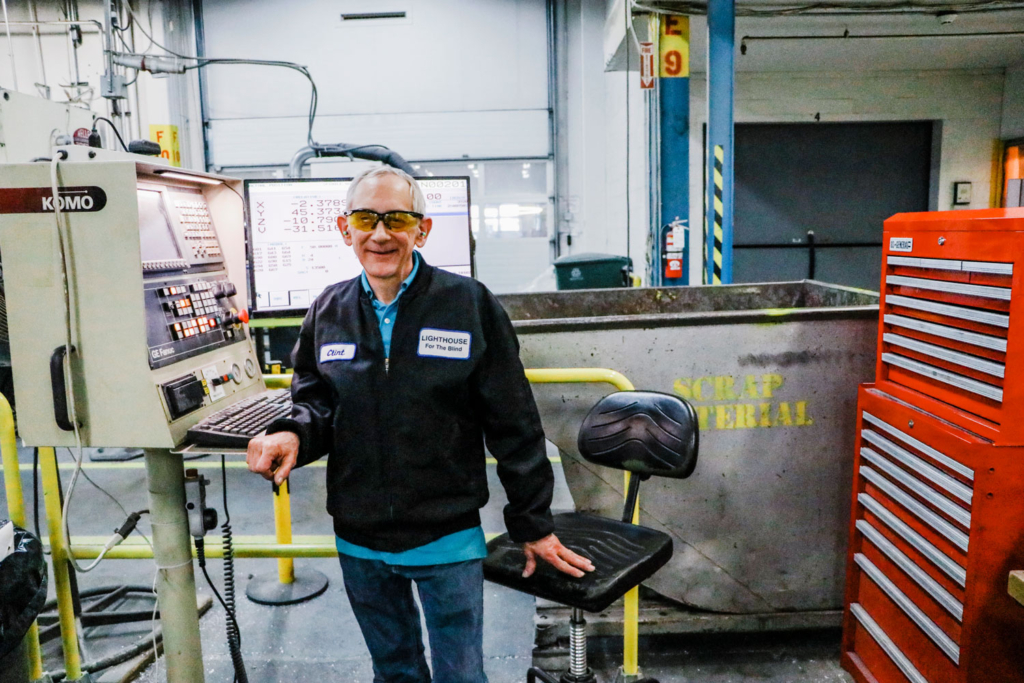
A man standing inside a machine shop, learning with his arm on the desk next to him, smiling and posing for the camera.
Disability employment at the Lighthouse
Disability employment is at the heart of the Lighthouse mission. We have provided employment and support to people who are blind for over 100 years. We the largest employer of people who are blind west of the Mississippi. We’re also the largest employer of DeafBlind individuals in the United States. Learn about open positions at the Lighthouse >>
The Lighthouse originally started out as a social club called the Seattle Association for the Blind. The group soon realized that people who are blind face many barriers to employment and basic education. In 1918, the small group evolved into The Lighthouse for the Blind, Inc. Since then, the Lighthouse has become a leading employer for blind and DeafBlind individuals. We have diversified both the population we serve and the employment opportunities we offer.
Our mission is to empower people who are blind, DeafBlind, and blind with other disabilities by creating diverse, sustainable, and meaningful employment opportunities. We also build and develop our employees’ skills to help advance their careers by offering on-going training and support. We offer computer and technology training, braille instruction, American Sign Language classes, Orientation and Mobility, and much more.
“The Lighthouse legacy of advocacy has positioned us as a key thought leader. We promote equity and inclusion for people who are blind and DeafBlind, both at the local and national levels. Our reputation, longevity, and expertise enable us to influence public policy, promote disability inclusion in the workplace, and deliver services to the community that directly enhance the lives of those we serve,” notes President and CEO, George Abbott.
